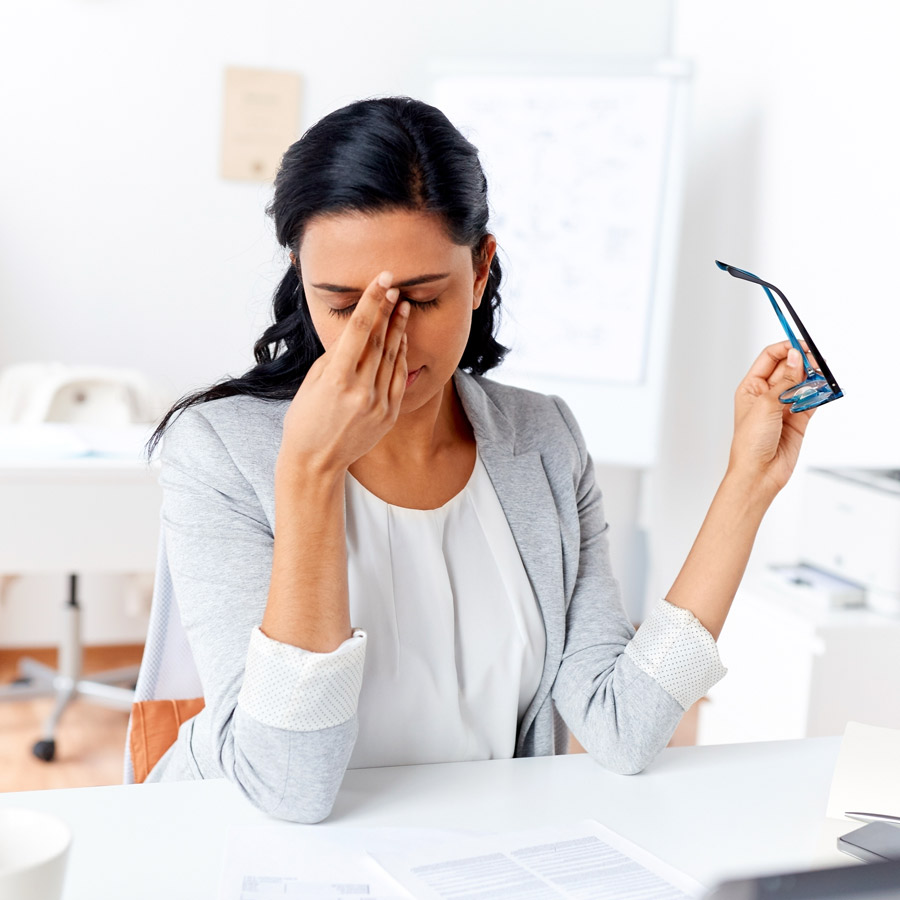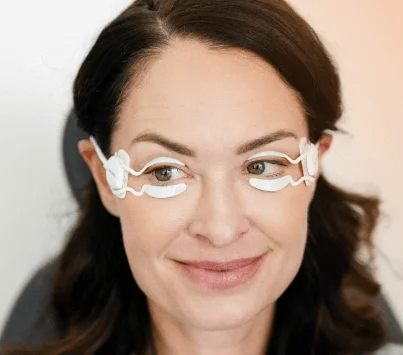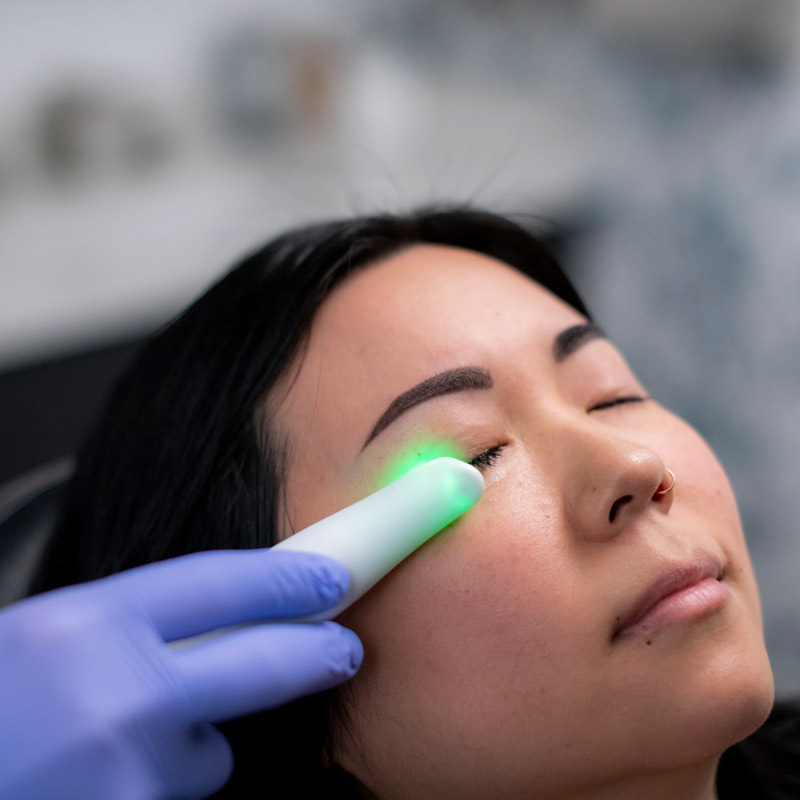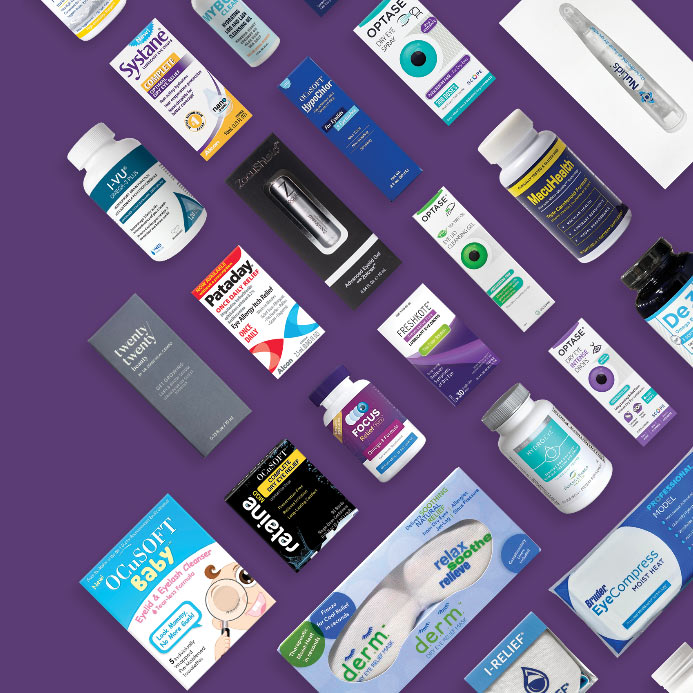
Diagnosis and Treatment for Dry Eye
Looking for a dry eye specialist in Andalusia? Our eye doctors at Ensight Eyecare have the expertise and advanced technology to diagnose and treat dry eye disease to help you find lasting relief from the uncomfortable symptoms.
Discount Code 20% off multi use code – ENSIGHTEC
What is Dry Eye?
Dry eye disease is a condition where your eyes aren’t producing enough quality tears to lubricate and nourish the eyes. Over 100 million people worldwide suffer from dry eye, and women are affected by dry eye 50% more than men.
Tears help maintain eye health and keep vision clear. Tears lubricate the eyes, reduce the risk of eye infections, wash away foreign matter in the eye, and keep the surface of the eyes smooth and clear. When tear production and drainage are out of balance, dry eye can occur.
Your tears are made of three components
- Lipid (oil layer that prevents the tears from evaporating)
- Aqueous (water and nutrients)
- Mucin (spreads the tear film evenly and stabilizes tears)
A decrease in the quality or the quantity of any of the three components will lead to dry eyes. In the past, it was thought that dry eye was primarily due to a lack of watery tears produced by the lacrimal gland above the eye. In the recent years, the complexity of the tear film and ocular surface has become increasingly apparent.
Dry eye is categorized into two distinct groups
- Aqueous deficiency dry eye (keratoconjunctivitis sicca)
- Evaporative dry eye (meibomian gland dysfunction)
Meibomian gland dysfunction (MGD) is thought to be responsible for over 85% of dry eye cases, which are mostly evaporative. MGD happens when the glands in the upper and lower eyelids are blocked and can no longer produce a healthy oil layer, causing the tears to evaporate quickly. Many cases of MGD are also associated with aqueous deficiency dry eye. Any imbalance can lead to dysfunction of the tear film.

What are the Symptoms of Dry Eye?
Signs and symptoms of dry eye, which usually affects both eyes, may include:
- A stinging, burning, or scratchy sensation in your eyes
- Stringy mucus in or around your eyes
- Sensitivity to light
- Eye redness
- A sensation of having something in your eyes
- Difficulty wearing contact lenses
- Difficulty with nighttime driving and participating in outdoor activities
- Watery eyes, which is the body’s response to dryness
- Blurry vision or eye fatigue
- Contact lens intolerance
- Reduced reading or near working time
As dry eye disease worsens, inflammation becomes more prominent. While many cases of dry eye are relatively mild, some may progress to cause severe damage to the surface of your eye and vision loss.
How is Dry Eye Diagnosed?
If you’re suffering from symptoms of dry eye disease, the first step is to schedule a comprehensive eye exam. If dry eye disease is suspected, our eye doctor may use a variety of diagnostic tools during an exam.
Slit Lamp
Our doctor will examine the surface of your eyes using a biomicroscope, also known as a slit lamp. The slit lamp has a bright light and allows our doctor to examine the different structures in the front of the eye and inside the eye. The slit lamp is a key tool to determine your overall eye health and detect eye disease.
OCULUS Keratograph 5M
We use an advanced technology called the OCULUS Keratograph 5M to examine your eyes. The Keratograph 5M has a high-resolution color camera and features intelligent software to analyze the collected data and document the findings. It can also compare results from before and after treatment to see if dry eye treatment is successful.

Dry Eye Treatment in Andalusia, AL
If you’re diagnosed with dry eye, our eye doctor will create a custom treatment plan to fit your needs. We offer different treatment options for patients suffering from dry eye, including heat eye pads, Oasis drops, wipes, and sprays unavailable over the counter. We also provide the following treatments in our office:

TearCare® Treatment for Dry Eyes
TearCare® is a comfortable, in-office treatment that uses targeted heat therapy to unclog the meibomian glands, one of the most common causes of dry eye. Unlike traditional warm compresses, TearCare® treatment in Andalusia delivers consistent, therapeutic heat directly to the eyelids while allowing patients to blink naturally throughout the procedure.
More about TearCare® treatment
After the heat application, our eye doctor will manually clear the melted oils from the glands to restore a healthy tear film and reduce inflammation. The TearCare® procedure is ideal for patients suffering from evaporative dry eye, and many experience long-lasting relief after only a few sessions. Patients report that TearCare® treatment is very comfortable and pain-free, with some even saying it’s a relaxing spa-like experience! The procedure is quick, typically about 15 minutes, and you can return to your normal routine immediately afterward.

NuLids Dry Eye Relief Therapy
If you have chronic dry eye, maintaining proper eyelid hygiene can help relieve persistent symptoms. Inflammation from conditions like blepharitis or meibomian gland dysfunction can block the oil glands that keep your eyes moist, leading to dryness, irritation, and discomfort.
More about NuLids PRO therapy
NuLids PRO is a handheld device that gently cleans and exfoliates your eyelids, removing scurf, biofilm, and debris that can build up along the lash line. NuLids PRO also helps reduce bacteria and Demodex mites, which are microscopic organisms that can worsen dry eye symptoms. Regular treatments at our office can improve oil gland function, reduce inflammation, and relieve daily eye discomfort.


Dry Eye Rescue
Discount Code 20% off multi use code –ENSIGHTEC
Schedule a Dry Eye Exam in Andalusia
If you’ve been dealing with dry eye symptoms and can’t find relief, book an appointment at Ensight Eyecare today. Our dry eye specialists in Andalusia, Alabama are here to help relieve your discomfort and improve your overall eye health!
